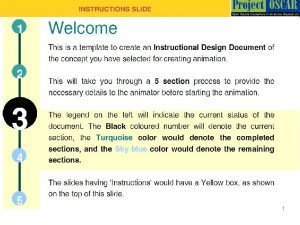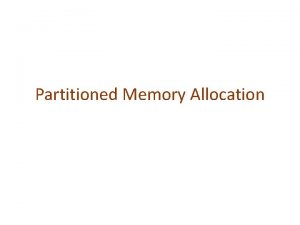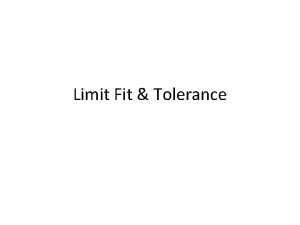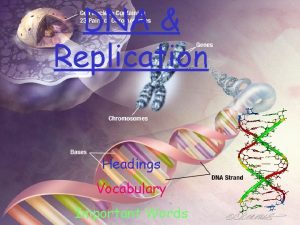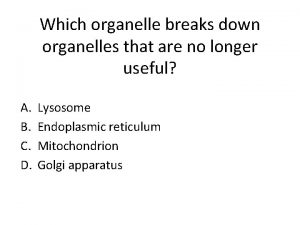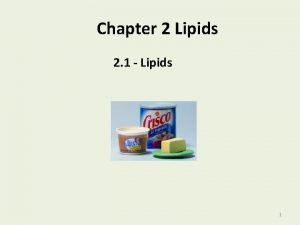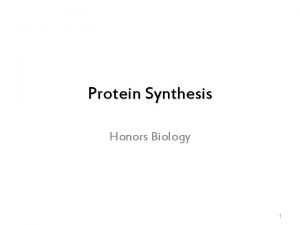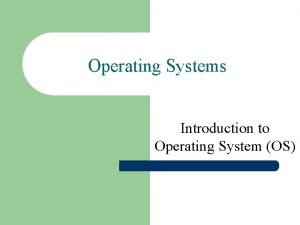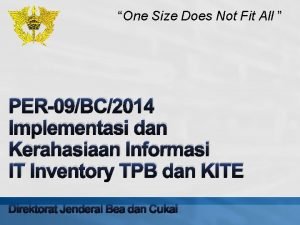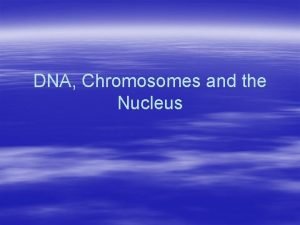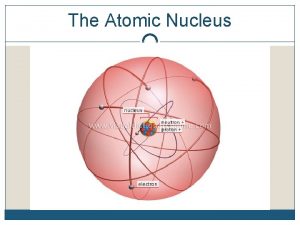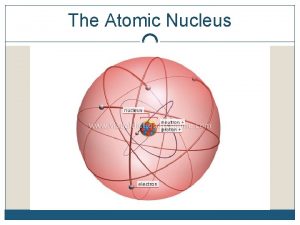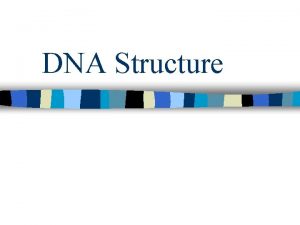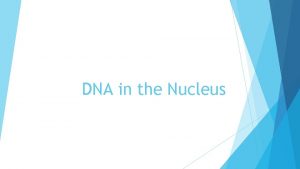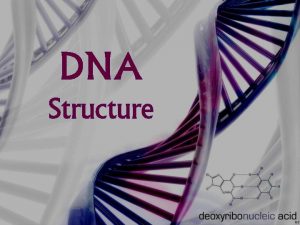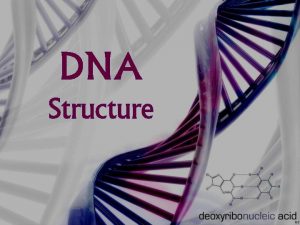How does DNA fit in the nucleus Structure



















- Slides: 19

How does DNA fit in the nucleus?

Structure of a chromosome • Human cells have 46 chromosomes in each nucleus • 44 autosomes and 2 gonosomes • DNA length of a single cell - unwrapped 46 chromosomes together - is 1. 8 meter • Diameter of nucleus is 20 - 30 µm → Problem: How can the unwrapped DNA fit into the small nucleus?

Structure of a chromosome → Therefore the DNA wraps around the histones: _ • Histones: alkaline proteins; positively charged • 8 histones build a ball • Negatively charged DNA wraps around the histone and a half times → It looks like a pearl chain DNA is 7 times shorter now (25 cm) +

Structure of a chromosome Nucleosomes are even more compact 2 -3 nucleosomes are next to each other The DNA is 14 times shorter now, but 3 times wider 30 nm.

Structure of a chromosome • Scientists don´t know exactly how the final structure is build • The DNA is folded into a one-chromatid-chromosome

Structure of a chromosome • Final chromosome with its typical x-structure before cell division • Metaphase chromosome is 3 nm long and 1, 4 nm wide and fits perfectly in the nucleus. Telomer Centromere

How genes are working?

What is a gene? A gene is a part of a chromosome which codes for RNA.

What do we need genes for? • for all proteins our cells make • proteins determine the structure and function of all cells • How do we get proteins from genes?

How do we get proteins from genes? The process is called Gene Expression following the Central Dogma of Molecular Biology: DNA RNA Protein Trait

Central dogma of molecular biology • DNA (gene) – RNA – protein (trait) • Two important steps – transcription and translation Transcription – in the nucleus Translation – on ribosomes - out of the nucleus By Dhorspool at en. wikipedia, CC BY-SA 3. 0, https: //commons. wikimedia. org/w/index. php? curid=15183788

Gene expression

Transcription – where? • a complementary RNA copy of a sequence of the DNA (of the gene) • Start – PROMOTOR, end - TERMINATOR By National Human Genome Research Institute, http: //www. genome. gov/Images/Ed. Kit/bio 2 c_large. gif, Public Domain, https: //commons. wikimedia. org/w/index. php? curid=37172691

Protein-coding gene structure - The gene is transcribed into a pre-m. RNA which is spliced to remove introns and generate a mature m. RNA. - Mature m. RNA will be transported to ribosomes and translated into the final protein product.

What for do we have introns in our DNA? They separate the coding regions of the gene and allow different combinations of exons to be spliced together. In other words, a single gene is capable of coding for more than one protein. This principle is called alternative splicing.

Alternative splicing By National Human Genome Research Institute - http: //www. genome. gov/Images/Ed. Kit/bio 2 j_large. gif, Public Domain, https: //commons. wikimedia. org/w/index. php? curid=2132737

What for do we have introns in our DNA? • Why do we have introns in the first place if we're only going to remove them later? Scientists called the introns 'junk DNA. • To generate multiple proteins out of one gene • Some introns can regulate transcription • They contain many repetitive sequences – specific for each individual We can use them for identification e. g. for a forensic fingerprint

Repeated sequences of DNA • Patterns of DNA that occure in multiple copies in our genome • Those in exons are transcribed and translated trait – they are under evolutionary pressure • In humans – some diseases are caused by number of repeats – e. g. Chorea HUNTINGTON - More than 35 CAG-repeats in one Allel of HUNTINGTON gene and you have the disease which breaks out at the age of 40 - More than 35 Glutamino acids in the Huntingtin protein makes it unsoluble, it aggregates and distroys nerve cells and kills you slowly - Gene test is available by PCR

Repeated sequence of DNA • Introns are transcribed – but then spliced out of the pre-m. RNA and NOT translated at the ribosomes into protein On introns is NO EVOLUTIONARY PRESSURE – but they are inherited completely • Specific number of repeats in individuals Can be used for identification in a genetic fingerprint
 First fit next fit best fit worst fit
First fit next fit best fit worst fit Worst fit memory allocation
Worst fit memory allocation What role does dna polymerase play in copying dna?
What role does dna polymerase play in copying dna? Minimum metal condition (lml) corresponds to the
Minimum metal condition (lml) corresponds to the Person-job fit and person-organization fit
Person-job fit and person-organization fit Building vocabulary: the nucleus, dna, and chromosomes
Building vocabulary: the nucleus, dna, and chromosomes Colors seen in images made from electron microscopes are
Colors seen in images made from electron microscopes are Replication
Replication Bioflix activity dna replication dna replication diagram
Bioflix activity dna replication dna replication diagram Coding dna and non coding dna
Coding dna and non coding dna Dna rna protein synthesis homework #2 dna replication
Dna rna protein synthesis homework #2 dna replication Cephalin structure
Cephalin structure Structure of a nucleus
Structure of a nucleus Translation dna
Translation dna Total product concept model
Total product concept model Elt supervision
Elt supervision Introduction to windows operating system
Introduction to windows operating system For with one not fit all
For with one not fit all One size does not fit all
One size does not fit all One size does not fit all in education
One size does not fit all in education
